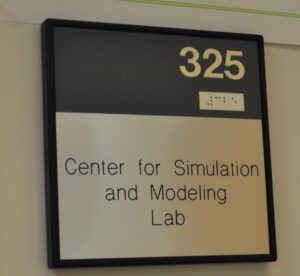 Of the 21 iterations of the definition of the word ‘scale’ in the Oxford Dictionary, one is particularly applicable to the latest 4-VA grant project “Scalable Molecular Dynamics;” that is: “the full range of different levels of people or things.” This definition illustrates both the scope of the research and the collaborators involved in the effort.
Of the 21 iterations of the definition of the word ‘scale’ in the Oxford Dictionary, one is particularly applicable to the latest 4-VA grant project “Scalable Molecular Dynamics;” that is: “the full range of different levels of people or things.” This definition illustrates both the scope of the research and the collaborators involved in the effort.
While orchestrating a variety of other projects and programs at Mason’s Center for Simulation and Modeling (CSM) located in the College of Science, lead PI Dr. Estela Blaisten-Barojas took on one more when she applied for and received the 4-VA grant. Blaisten-Barojas was interested in undertaking a serious study of predictive computational and simulation-based approaches in chemical and materials sciences combined with engineering approaches. This study is central to finding innovative solutions for environmental pollution, healthcare, sustainable energy resources, global warming, and ways of fighting terrorism, crucial to both Virginia’s and the nation’s competitiveness in science and engineering.
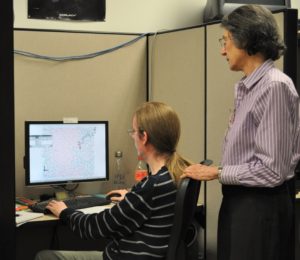
To launch and deliver “Scalable Molecular Dynamics” a full-throttled balancing act was necessary, Blaisten-Barojas called in her colleague Dr. Robert Handler from the Mechanical Engineering department at Volgeneau and Dr. Eric Weisel, Executive Director, Virginia Modeling, Analysis, and Simulation Center (VMASC) at Old Dominion University, a 4-VA partner school. Then, she added a number of talented students, including Gideon Gogovi, Scott Hopkins and James Andrews, to her 4-VA team. Each brought countless hours of research to the project – enhancing both the collective mission and their personal portfolios.
Blaisten-Barojas was interested in testing computational techniques for scaling up various aspects of a molecular simulation in which a large molecule is solvated or flows in a viscous solvent. Specifically, they studied the atomistic behavior of the polymer polyacrylamide, or PAM. This polymer, when immersed in gel-type solvents, is used for the separation of proteins, an important component in bio detection.
The team’s research identified several interesting and notable characteristics regarding the structure and energetics of PAM in implicit and explicit solvents – as team members studied the chain shape and the diversity of coiling and twists of the polymer in the various solvents. The researchers noted closely the changes in shape from an elongated spaghetti string to a more football-like object. Importantly, based on what they learned, they were able to make some scaling up predictions about how big structures can grow. This new understanding is valuable for efficiently controlling the performance of devices based on molecular components.Once the project got moving, the full range definition of scalability was set in motion. In fact, the simulations were so complex that they reached the maximum allowed in Argo, Mason’s centralized research computing cluster.
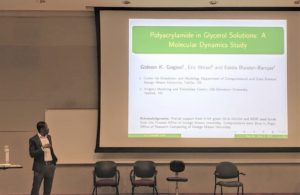

Already, two conference presentations have been made based on the research – a talk and a poster at the recent American Chemical Society (ACS) Mid Atlantic Research Meeting; two journal papers are in submission.
Blaisten-Barojas notes that although the research, results and dissemination have been gratifying, it was the new-found relationship with the VMASC which capped the full range of different levels of people and subjects concept. “This is a very important first step,” Blaisten-Barojas notes. “We now know who they are and they know who we are. I know that if they see possibilities in some of their initiatives, they will knock on our door first and we will do the same.”

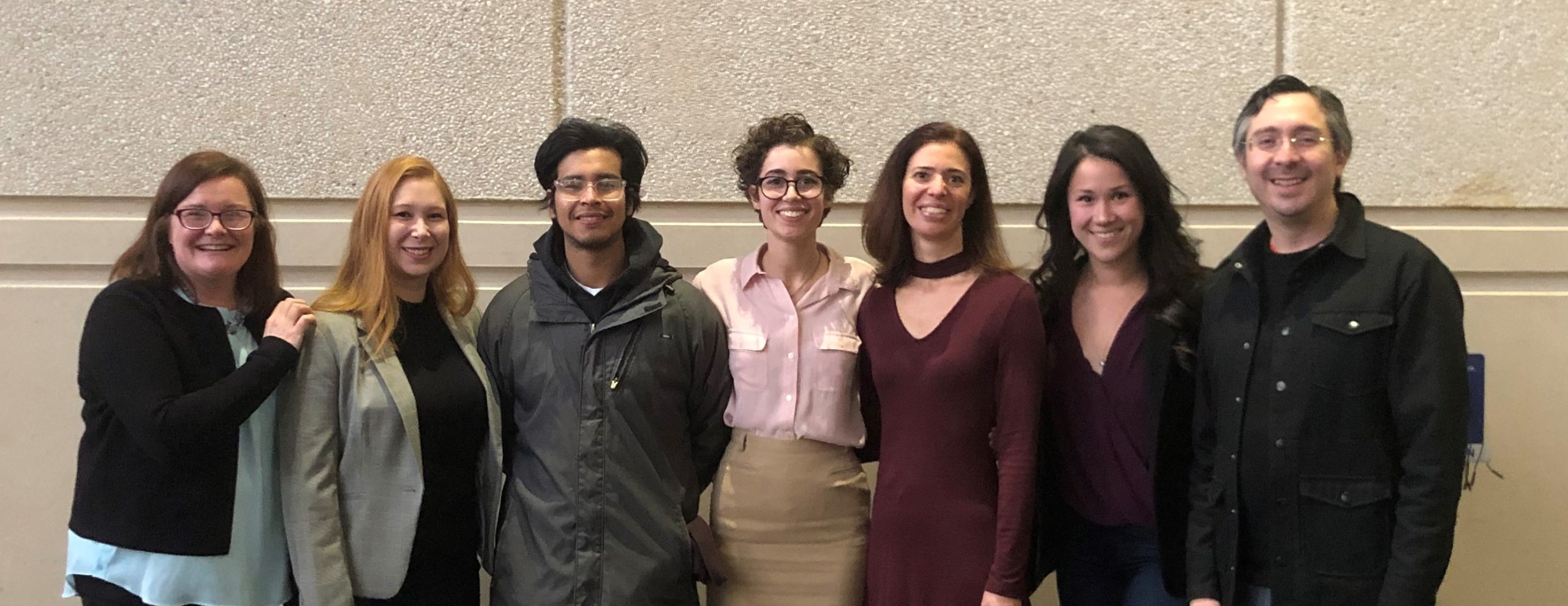
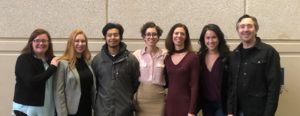
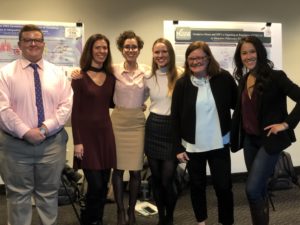
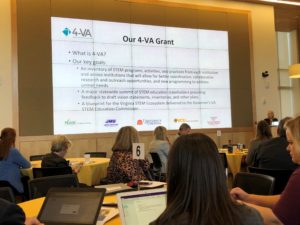 More than 140 leaders from Virginia’s K-12 and higher education institutions, out-of-school providers, the private and business sectors, and state officials and institutions joined together recently to begin the work of developing a blueprint for a statewide STEM network. This structure will be the basis for creating cross sector pedagogies providing Virginia’s youth access to a learning environment which will allow them to grow important skills to engage in science, technology, engineering, and mathematics from PreK – 16. “Virginia’s STEM Summit” was hosted by Virginia Commonwealth University and sponsored through a grant from 4-VA. The project was developed by a group 4-VA schools – VCU, Virginia Tech, George Mason, James Madison, and University of Virginia in coordination with the Virginia Department of Education and the Office of the Governor.
More than 140 leaders from Virginia’s K-12 and higher education institutions, out-of-school providers, the private and business sectors, and state officials and institutions joined together recently to begin the work of developing a blueprint for a statewide STEM network. This structure will be the basis for creating cross sector pedagogies providing Virginia’s youth access to a learning environment which will allow them to grow important skills to engage in science, technology, engineering, and mathematics from PreK – 16. “Virginia’s STEM Summit” was hosted by Virginia Commonwealth University and sponsored through a grant from 4-VA. The project was developed by a group 4-VA schools – VCU, Virginia Tech, George Mason, James Madison, and University of Virginia in coordination with the Virginia Department of Education and the Office of the Governor.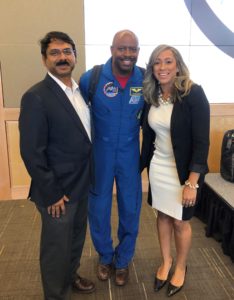
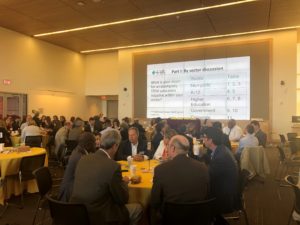 The day concluded with a group effort to integrate the work created at each roundtable into a viable framework for the Commonwealth. The conclusions will provide the basis for the STEM ecosystem build out and will be forwarded to the Virginia’s STEM Education Commission.
The day concluded with a group effort to integrate the work created at each roundtable into a viable framework for the Commonwealth. The conclusions will provide the basis for the STEM ecosystem build out and will be forwarded to the Virginia’s STEM Education Commission.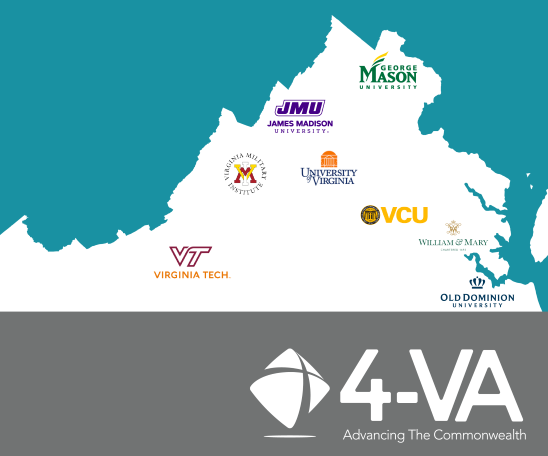
 “We are delighted to bring William and Mary and VMI into our 4-VA collaborative,” said 4-VA Mason Campus Coordinator Janette Muir. “The very strength of 4-VA is collaboration. With our additional partners, our students and faculty have more opportunities — that’s great for higher education in the Commonwealth.”
“We are delighted to bring William and Mary and VMI into our 4-VA collaborative,” said 4-VA Mason Campus Coordinator Janette Muir. “The very strength of 4-VA is collaboration. With our additional partners, our students and faculty have more opportunities — that’s great for higher education in the Commonwealth.” of collaboration with our sister institutions.”
of collaboration with our sister institutions.”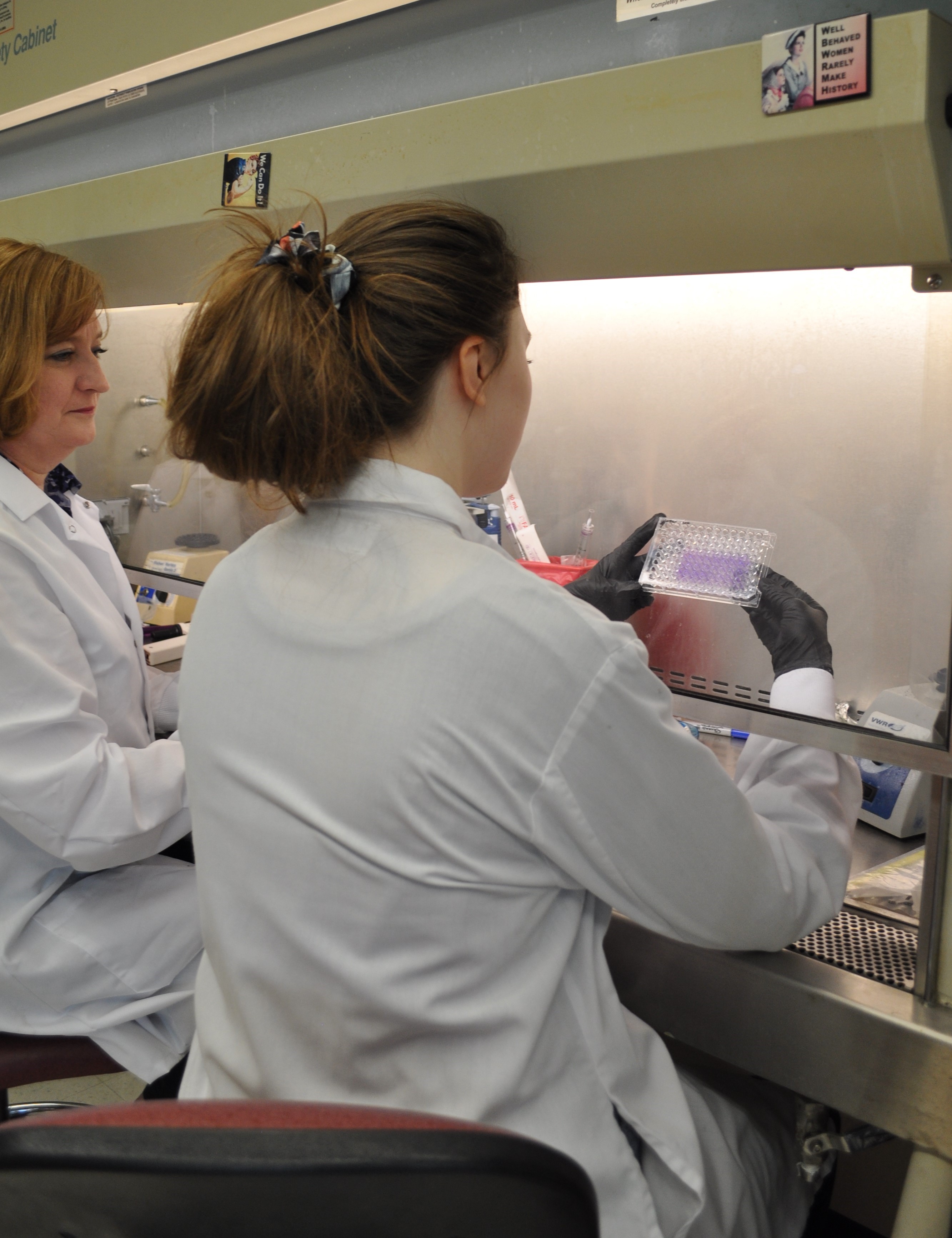
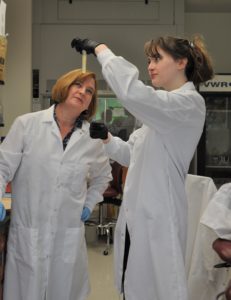
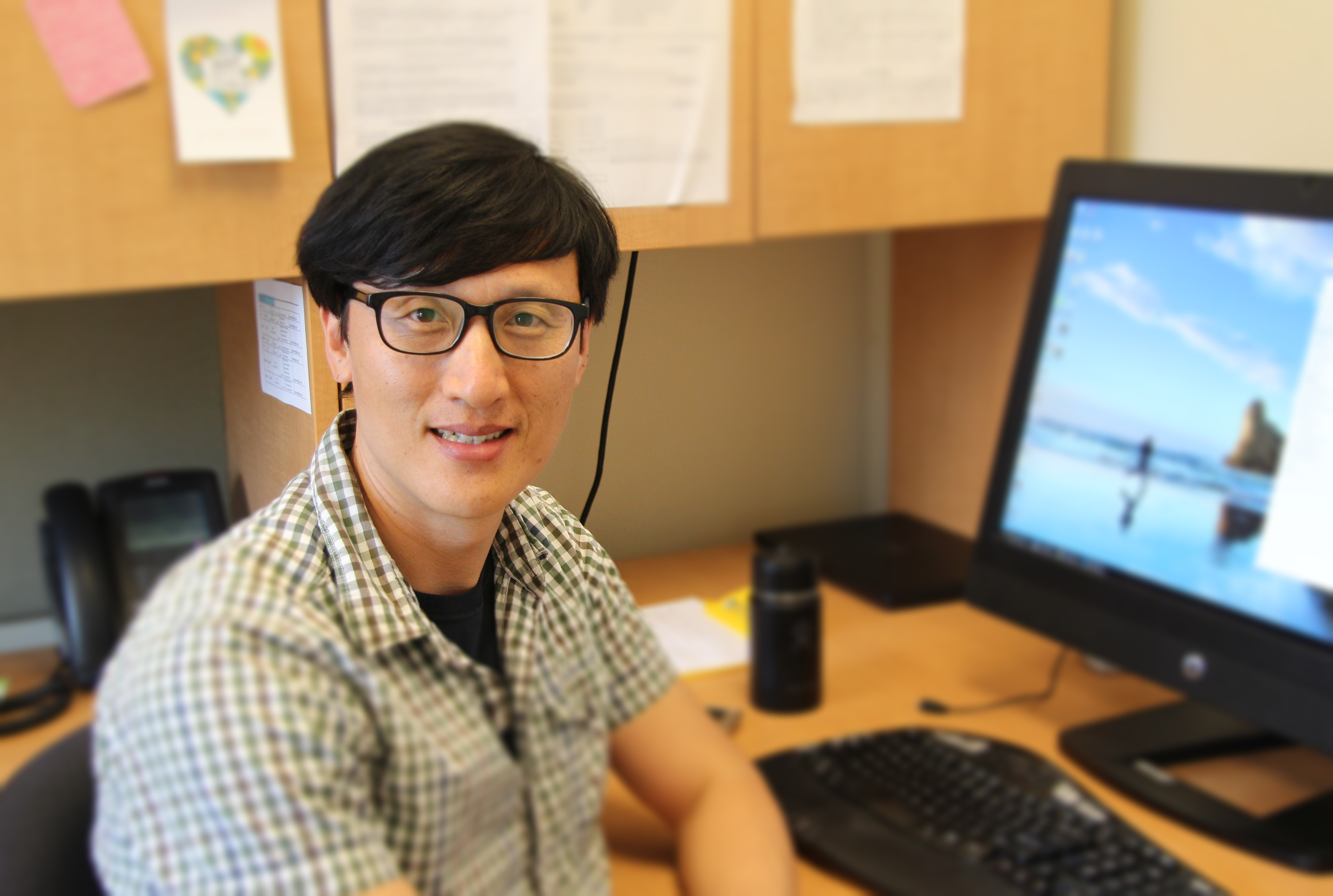
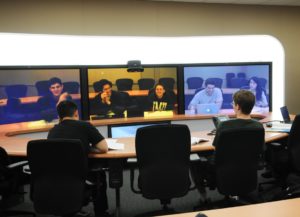 the classroom to make it interesting and challenging,” explains Kim.
the classroom to make it interesting and challenging,” explains Kim. recognizes there is much to be understood about creating constructive introductions in the school setting. However, she is also keenly aware of a key flaw in the data used in the benchmark research – it is predominantly limited to students who are economically advantaged.
recognizes there is much to be understood about creating constructive introductions in the school setting. However, she is also keenly aware of a key flaw in the data used in the benchmark research – it is predominantly limited to students who are economically advantaged.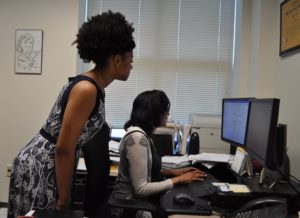 Several months later, with that grant in hand, Garner identified an undergrad student, Tamera Toney, who was interested in the project and would be able to handle some of the data entry and management responsibilities. Toney worked on the project during her senior year at Mason. Garner saw that the 4-VA funding could provide a personal and professional pathway for Toney to enhance her studies. Toney recently graduated and will return in the fall to begin her master’s work in Psychology.
Several months later, with that grant in hand, Garner identified an undergrad student, Tamera Toney, who was interested in the project and would be able to handle some of the data entry and management responsibilities. Toney worked on the project during her senior year at Mason. Garner saw that the 4-VA funding could provide a personal and professional pathway for Toney to enhance her studies. Toney recently graduated and will return in the fall to begin her master’s work in Psychology.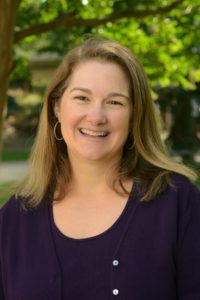
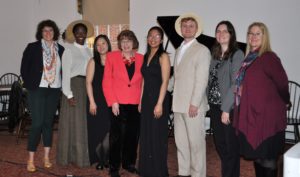
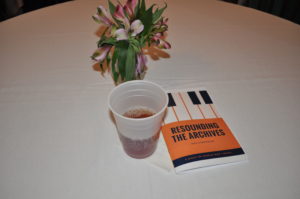 rehearsed and studied the music within its historical context. And similar to good musical composition, RtA worked to a crescendo. For the RtA team, that was a spring evening in Charlottesville when the team of researchers, performers (musicians and singers), videographers and archivists, librarians, faculty and more joined together in UVA’s Colonnade Club Garden Room to fully embrace 17 pieces of WWI music. From “K-K-K Katy” to “Over There” to “Oh How I Hate to Get Up in the Morning” the Colonnade Room sprang to life — circa 1918.
rehearsed and studied the music within its historical context. And similar to good musical composition, RtA worked to a crescendo. For the RtA team, that was a spring evening in Charlottesville when the team of researchers, performers (musicians and singers), videographers and archivists, librarians, faculty and more joined together in UVA’s Colonnade Club Garden Room to fully embrace 17 pieces of WWI music. From “K-K-K Katy” to “Over There” to “Oh How I Hate to Get Up in the Morning” the Colonnade Room sprang to life — circa 1918.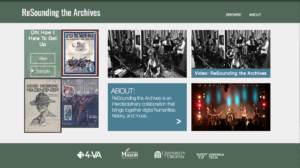
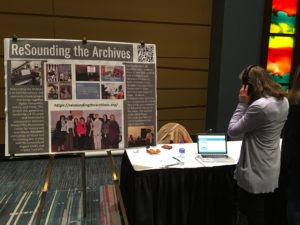
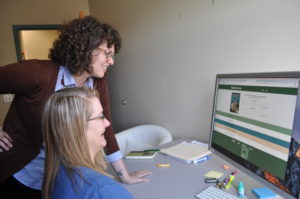
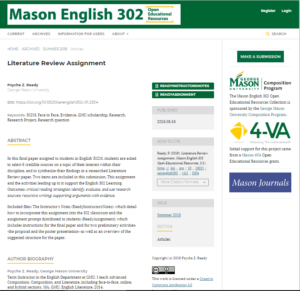 Team member Psyche Z. Ready, assisted by Joyce P. Johnston, took the lead in adapting Mason Journals’ iteration of the Open Journal System (OJS) to meet the needs of English 302 OER collection authors, reviewers, and users. Each item in the new, public-facing collection includes an abstract, instructor’s notes, and creative-commons licensed curricular materials – assignments, activities, and/or background readings – created, adapted, or curated for use in English 302. The OJS platform eases the review process, and also allows user-friendly features such as keyword searching.
Team member Psyche Z. Ready, assisted by Joyce P. Johnston, took the lead in adapting Mason Journals’ iteration of the Open Journal System (OJS) to meet the needs of English 302 OER collection authors, reviewers, and users. Each item in the new, public-facing collection includes an abstract, instructor’s notes, and creative-commons licensed curricular materials – assignments, activities, and/or background readings – created, adapted, or curated for use in English 302. The OJS platform eases the review process, and also allows user-friendly features such as keyword searching.